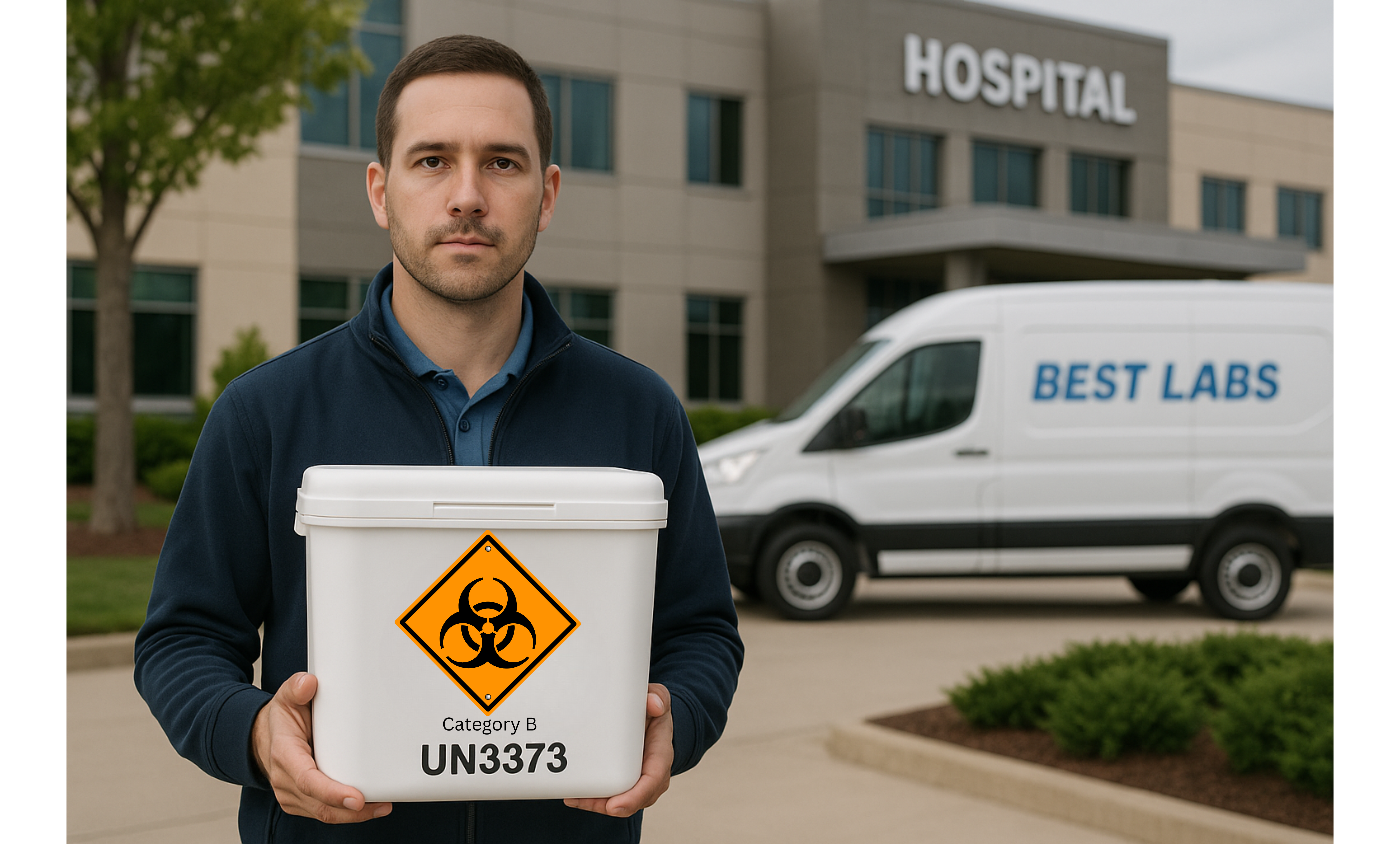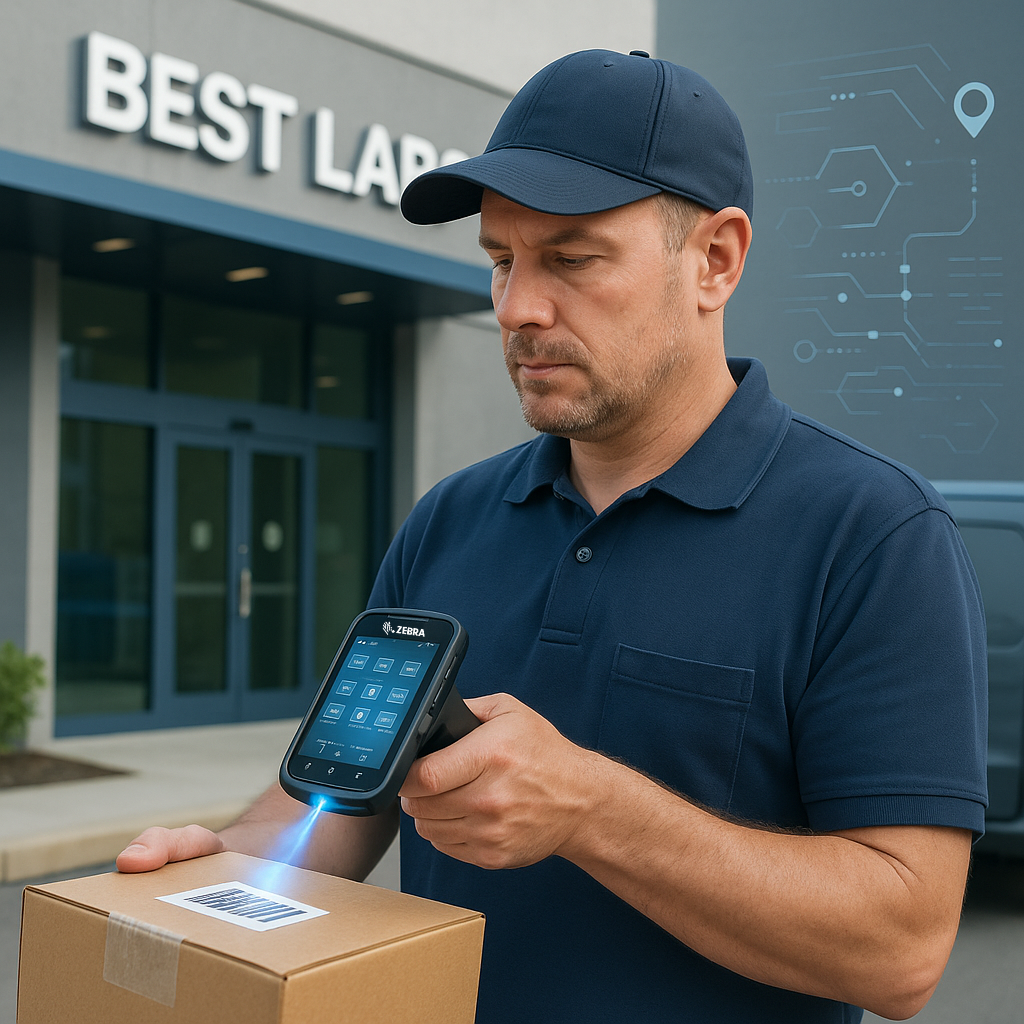The Importance of Using Barcodes in Medical Courier Operations
Lost specimens are more than an inconvenience, they are a threat to patient safety. Every lab leader has faced that dreaded phone call: a specimen is...
5 min read
Graecee Melton : Jun 12, 2025 11:01:27 AM

In the world of medical logistics, few responsibilities are more important than the safe transport of infectious substances. From routine diagnostic specimens to high-risk pathogens, medical couriers handle materials that have the potential to seriously impact human and animal health. That’s why regulations exist. It’s critical for medical couriers to understand them.
This blog is here to break it down in a clear, easy to understand way. Whether you're new to the industry or just need a refresher, we’ll walk you through the basics of what counts as an infectious substance, how they’re classified, and what rules couriers must follow to ensure compliance and safety.
Why Are Infectious Substances Regulated During Transportation?
Infectious substances can pose serious risks during transport if they are not properly packaged and labeled. That’s why the U.S. Department of Transportation has rules in place to help protect couriers, lab staff, and the public. These rules make sure that everyone who comes into contact with a package understands the potential risks and how to handle it safely.
These regulations aren’t just about red tape—they're about safety. Improperly packaged materials can leak, exposing drivers, lab technicians, and even unsuspecting bystanders to dangerous pathogens. In the worst-case scenario, that exposure could lead to infection, serious illness, or worse.
To make things easier to manage, infectious substances are divided into two main categories: Category A and Category B. This system was created with the help of health and safety organizations like the World Health Organization and the Centers for Disease Control and Prevention.
The Classification System: Category A vs. Category B
What is an infectious substance?
It’s any material that is known—or reasonably expected—to contain a virus, bacteria, parasite, fungus, or prion that could cause disease. These can come from human or animal sources and are typically found in samples such as blood, tissue, or bodily fluids.
Category A
These are the high-risk substances. They can cause serious illness or even death if a person or animal is exposed to them. That doesn’t just mean contact with the outside of the packaging; exposure happens when the substance leaks out and comes into contact with someone. These are considered highly infectious and require the highest level of caution.
Examples include things like Ebola virus, anthrax cultures, or dangerous flu strains. These are rare, but when they are transported, they must be handled with extreme care. The packaging and documentation requirements are much stricter for these.
Couriers will usually not encounter Category A substances in their day-to-day work unless they are supporting research labs, hospital outbreaks, or government health agencies. Still, it’s good to know what these substances are and what to do if you’re ever asked to transport one.
Category B
These are the substances that most medical couriers handle. They might include blood samples, urine, saliva, or other materials being sent to labs for testing. While they could contain infectious agents, they are not likely to cause serious or life-threatening illness in healthy people.
In fact, many common diagnostic specimens fall into this category, especially when patients are being tested for routine infections. Even samples from patients with flu or COVID-19 are typically considered Category B because they are handled in standard clinical settings and don’t usually pose a high level of risk.
How Do You Know Which Category a Specimen Falls Into?
This isn’t something the courier usually decides. The person preparing the specimen, like a phlebotomist or nurse, will classify the material based on the patient's medical history and the reason for testing.
Sometimes it’s obvious: a sample being tested for strep throat or COVID-19 will likely fall under Category B. But in some cases, medical professionals will need to use their judgment, especially if the patient has been exposed to something rare or dangerous.
If you're ever unsure, it’s okay to ask questions or flag a package that doesn’t look properly prepared. Better to double-check than risk moving something improperly packaged or labeled.
Packing and Labeling: What Couriers Must Know
For Category B substances
When transporting a Category B substance, it should be packaged using a three-layer system:
The outer packaging must also be clearly labeled. You should see the words “Biological substances, Category B” and a diamond-shaped label marked with UN3373. This helps everyone know what’s inside and how to handle it safely.
Additionally, the name and contact information of the responsible person (typically the shipper) should be visible. This is required in case emergency responders need to reach someone quickly.
Hazardous Materials Compliance: What It Means for Couriers
The safe transport of infectious substances in the U.S. is governed by federal law under the Hazardous Materials Transportation Act (HMTA), outlined in 49 U.S.C. 5101 et seq. These laws authorize the U.S. Department of Transportation to set rules that help protect public safety when hazardous materials—including infectious substances—are moved in commerce.
The regulations that stem from this law are published in 49 CFR Parts 100–180, and they apply to both interstate and intrastate shipments by ground, air, rail, or vessel. That includes most of the work done by medical couriers.
So what does this mean for you?
If you’re transporting diagnostic specimens, blood samples, or other biological materials that fall under these rules, you are responsible for making sure they are:
Whether you're called a courier, driver, or logistics tech, if you're involved in transporting hazardous materials in commerce, you're part of a highly regulated system. Taking the time to understand and follow these rules helps protect you, your coworkers, and the patients those samples represent.
Real-World Challenges Couriers Face
Even though the rules are straightforward, things don’t always go smoothly. Couriers often run into situations like:
All of these situations can be serious, both from a safety and legal perspective. That’s why it’s so important for couriers to be trained, stay alert, and trust their instincts when something doesn’t look right.
Couriers are often the last line of defense before a package reaches the lab. Your diligence can prevent a small mistake from becoming a major incident.
What Should Couriers Do If a Package Looks Wrong?
If you pick up a package and something seems off—maybe it’s leaking, smells strange, or is missing the correct labels—don’t ignore it. Set the package aside and report the issue immediately. Do not move it until someone has checked it.
Notify your dispatcher or supervisor, and if your company has a formal reporting system, use it. Taking a photo and writing a brief note about the issue can help document the situation clearly.
In cases where a substance does leak during transport, that needs to be officially reported. The regulations are in place to make sure the right people are notified so the situation can be handled properly.
Supporting Couriers with the Right Tools
At Medical Courier Elite, we know that medical couriers are on the front lines. You need the right tools to handle every situation that comes your way, especially when infectious substances are involved.
Our software helps you document and report problems quickly and accurately. With MCE, you can:
Having a system like this not only helps keep everyone safe—it also shows your clients and partners that you’re serious about compliance and professionalism. It gives peace of mind to those trusting you with sensitive and potentially dangerous materials.
In this blog we referred to PHMSA’s official guide on Transporting Infectious Substances Safely. Click Here to view the full guide.
Final Thoughts: Safety Starts with Awareness
Transporting infectious substances isn’t just about following rules—it’s about protecting lives. Whether you're carrying a routine lab specimen or something more serious, every package matters. When couriers are trained, alert, and supported with the right tools, we all benefit.
If you work in medical logistics and want a smarter, safer way to manage your deliveries, Medical Courier Elite is here to help. With tools designed specifically for your needs, we make it easier to handle sensitive materials with confidence.
Let’s move healthcare forward—safely and smartly.
Click Here to schedule a free demo of Medical Courier Elite and see how we can help you transport infectious substances safely and efficiently.
.png)
Lost specimens are more than an inconvenience, they are a threat to patient safety. Every lab leader has faced that dreaded phone call: a specimen is...

How MCE and Zebra’s TC27 Help Courier Teams Work Smarter, Stay Compliant, and Grow with Confidence

Exceptional customer service in healthcare begins with the face of your lab—your medical couriers. Your courier’s professionalism directly reflects...